It is once again time to say goodbye - and again, another island is waiting for us. Our last stop on the Azores is the island São Miguel!
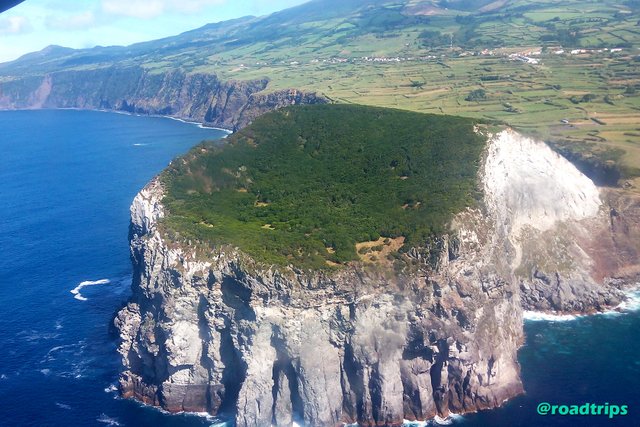
The plane from Pico leaves in the morning, so we arrive quite early on the main island of the Azores and can pick up relaxed our rental car (1 h flight approximately).
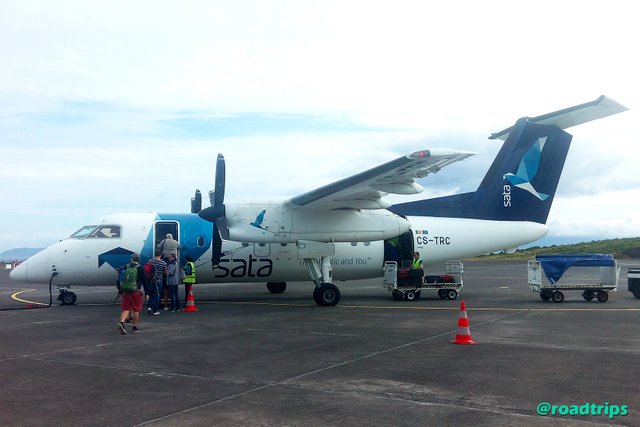
On the way to our accommodation, we make a detour to two plantations that are unique for Europe: a pineapple and a tea plantation!
The pineapple plantation is located in a suburb of Ponta Delgada and is not so easy to find. Of course, we get lost. We are so disoriented that we have to ask an Azorean woman who is gaily chatting with her neighbor on the side of the road for help.
The nice lady doesn’t hesitate but jumps into her car and waves her hands wildly: We have to follow her. Somewhat perplexed, since we are not used to so much hospitality from Germany, we follow her. And indeed: after 5 minutes through narrow streets, we finally arrive at the entrance gate of the pineapple plantation.
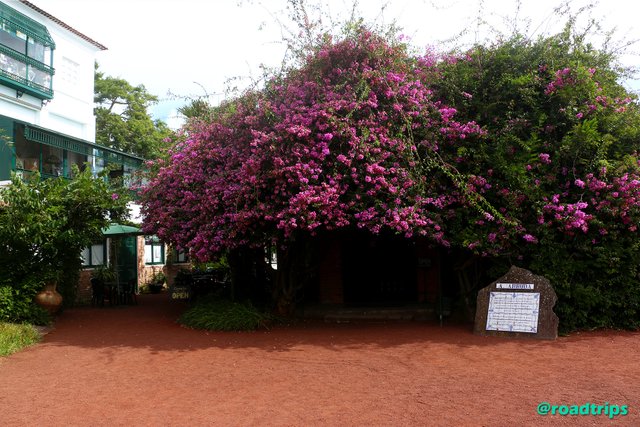 At the entrance of the plantation
At the entrance of the plantation
On a small flyer we received at the entrance (no entrance fee), we learn that the pineapple plant was brought in the 19th century from South America to São Miguel, initially as a decorative plant. It quickly became clear that the plant could be cultivated on the Azores Island, so that in 1860, the first plantation was created.
São Miguel is the only place in the world where pineapples are grown in greenhouses. The fruit is the emblem of the island.
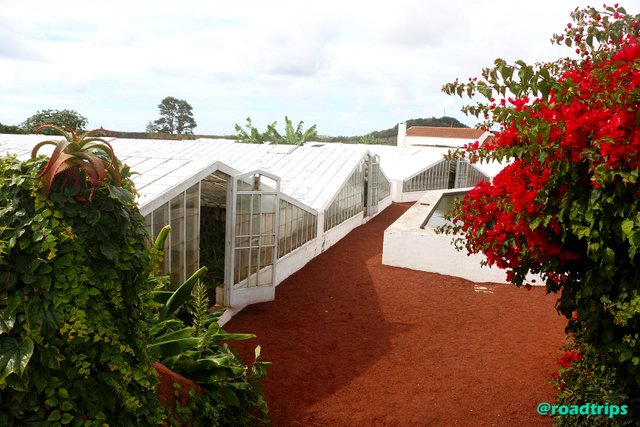 Growing pineapples in greenhouses
Growing pineapples in greenhouses
We quickly understand why the price of 5-8 € per pineapple is justified: it takes 1.5 years until the small plant becomes an edible fruit.
A complicated smoking method causes all plants to flower at the same time, making the cultivation of the pineapple much easier.
Visiting the plantation creates an awareness of how much work has to be done to obtain this wonderful fruit.
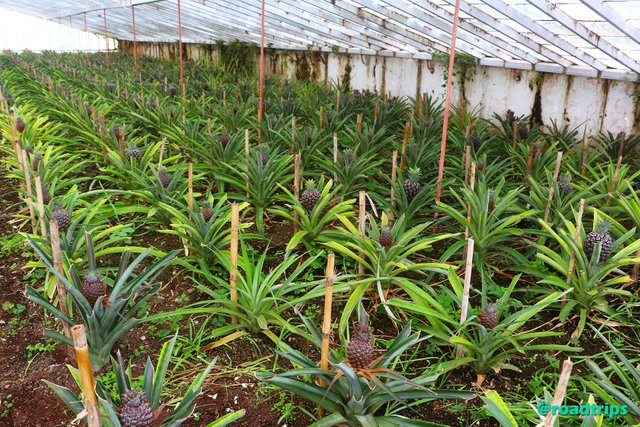 Do you think that you could harvest these ones already?
Do you think that you could harvest these ones already?
In addition, the plantation is beautifully maintained, a small bistro offers pineapple specialties, in a small shop you can stock up on the fruits and fruit products.
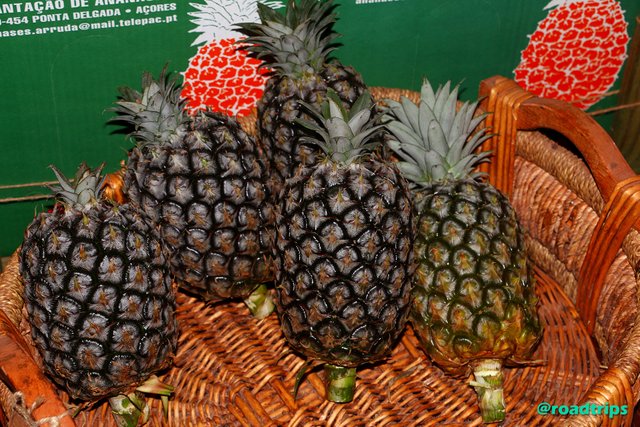 A pineapple from Europe - just heavenly!
A pineapple from Europe - just heavenly!
Of course, we did not miss a tasting. Incredible! So juicy and aromatic! We hardly can describe it to you here - you just have to try it! Anyway, that was the best pineapple we have ever eaten!
Conclusion of the day: The pineapple plantation is an absolute must-do! Especially as Europeans, you should not miss the opportunity to try fresh pineapple from your own continent :)
Curious how our culinary tour continues? Be curious about our tea tasting on the coast and stay connected!
The essential:
- Pineapple plantation: an absolute must-do on São Miguel!
- Address: Rua Doutor Augusto Arruda, Fajã de Baixo, 9500-454 Ponta Delgada, Portugal
- Plan approx. 1 hour
German (same post)
Saftige Ananas aus Europa? Auf São Miguel!
Schon wieder ist es Zeit, Abschied zu nehmen – und schon wieder wartet eine neue Insel auf uns. Unser letzter Stopp auf den Azoren heißt: São Miguel!
Der Flieger von Pico geht schon morgens, sodass wir vormittags auf der Hauptinsel der Azoren ankommen und entspannt unseren Mietwagen abholen können.

Auf dem Weg zu unserer Unterkunft machen wir noch einen Abstecher auf zwei Plantagen, die für Europa einzigartig sind: Eine Ananas- und eine Teeplantage.
Die Ananasplantage befindet sich in einem Vorort von Ponta Delgada und ist nicht ganz einfach zu finden. Natürlich verfahren wir uns erst einmal und sind dann so orientierungslos, dass wir eine Azoreanerin um Hilfe beten, die gerade munter mit ihrem Nachbar am Straßenrand quatscht. Die nette Dame zögert nicht lange, springt in ihr Auto und fuchtelt wie wild mit den Händen: Wir sollen ihr folgen. Etwas verdutzt, da wir so viel Gastfreundlichkeit aus Deutschland nicht gewohnt sind, folgen wir ihr. Und tatsächlich: nach 5 Minuten durch enge Gassen und Sträßchen kommen wir am unscheinbaren Eingangstor der Ananasplantage an.
Auf einem kleinen Flyer, den wir am Eingang (kostenlos) erhalten haben, erfahren wir, dass die Ananaspflanze im 19. Jahrhundert von Südamerika nach São Miguel gebracht wurde, vorerst als Zierpflanze. Schnell wurde klar, dass sich die Pflanze auf der Azoreninsel kultivieren lässt, sodass 1860 die erste Plantage entstand.
São Miguel ist der einzige Ort auf der Welt, auf welchem Ananas in Gewächshäusern gezüchtet wird. Die Frucht ist das Wahrzeichen der Insel.
Schnell verstehen wir, wieso der Preis von 5- 8 € pro Ananas berechtig ist: Ganze 1,5 Jahre dauert es, bis dass aus dem kleinen Pflänzchen eine genießbare Frucht wird.
Eine aufwendige Räuchermethode führt dazu, dass alle Pflanzen zum gleichen Zeitpunkt blühen, was die Zucht der Ananas deutlich erleichtert.
Der Besuch der Plantage schafft ein Bewusstsein, wie viel Arbeit hinter dieser wunderbaren Frucht steckt.
Zudem ist die Anlage wunderschön gepflegt, ein kleines Bistro bietet Ananasspezialitäten an, in einem kleinen Laden kann man sich mit den Früchten und Fruchterzeugnissen eindecken.
 Eine Ananas aus Europa – einfach nur himmlisch!
Eine Ananas aus Europa – einfach nur himmlisch!
Selbstverständlich haben wir uns eine Geschmacksprobe nicht entgehen lassen. Unglaublich! So saftig und aromatisch! Wir können es euch hier kaum beschreiben – das müsst ihr einfach probieren! Für uns jedenfalls war das die beste Ananas, die wir je gegessen haben!
Fazit des Tages: Die Ananasplantage ist ein absolutes Muss! Gerade als Europäer sollte man sich nicht die Möglichkeit entgehen lassen, frische Ananas vom eigenen Kontinent zu probieren :)
Neugierig, wie unsere kulinarischer Ausflug weitergeht? Seid gespannt auf unsere Teeverkostung an der Küste!
Das Wichtigste in Kürze:
- Ananasplantage: ein absolutes Muss auf São Miguel!
- Adresse: Rua Doutor Augusto Arruda, Fajã de Baixo, 9500-454 Ponta Delgada, Portugal
- Ca. 1 Stunde einplanen
French (same post)
Délicieux ananas d'Europe? Seulement sur São Miguel!
Il est encore une fois temps de dire au revoir - et encore une fois, une autre île nous attend. Notre dernier arrêt aux Açores est l'île de São Miguel!
L'avion de Pico part le matin, nous arrivons donc assez tôt sur l'île principale des Açores et pouvons récupérer notre voiture de location assez tôt (1 heure de vol environ).

En route vers notre hébergement, nous faisons un détour vers deux plantations uniques en Europe: une plantation d'ananas et une de thé!
La plantation d'ananas est située dans une banlieue de Ponta Delgada et n'est pas trop facile à trouver. Bien sûr, nous nous perdons. Nous sommes tellement désorientés que nous devons demander de l'aide à une femme açorienne qui bavarde avec sa voisine sur le bord de la route.
La dame n'hésite pas : elle saute dans sa voiture et nous fait des grands signes avec les mains: nous devons la suivre. Un peu perplexe, puisque nous ne sommes pas habitués à tant d’hospitalité en Allemagne, nous la suivons. Et en effet: après 5 minutes à travers des rues étroites, nous arrivons enfin à la porte d'entrée de la plantation d'ananas.
Sur un petit dépliant que nous avons reçu à l'entrée, nous apprenons que la plante d'ananas a été introduite au 19ème siècle d'Amérique du Sud à São Miguel, initialement en tant que plante décorative. Il devint rapidement évident que la plante pouvait être cultivée sur l'île des Açores, de sorte qu'en 1860, la première plantation fut créée.
São Miguel est le seul endroit au monde où les ananas sont cultivés en serre. Le fruit est l'emblème de l'île.
 Cultiver des ananas dans des serres
Cultiver des ananas dans des serres
On comprend très vite pourquoi le prix de 5 à 8 € par ananas est justifié: il faut 1,5 ans pour que la petite plante devienne un fruit comestible.
Une méthode de fumage compliquée fait fleurir toutes les plantes en même temps, facilitant ainsi la culture de l'ananas.
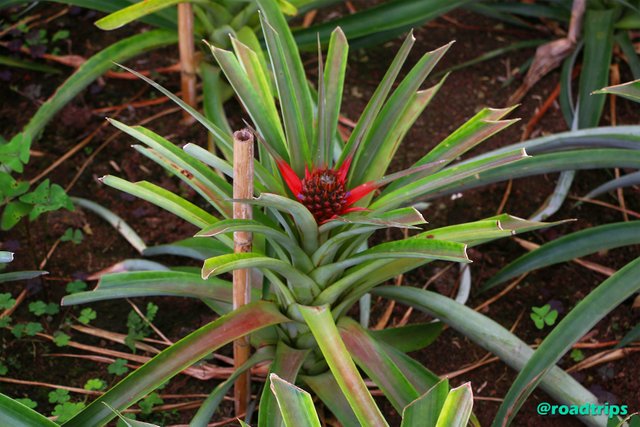 Petits ananas - comme c'est mignon!
Petits ananas - comme c'est mignon!
La visite de la plantation permet de prendre conscience de tout le travail qui est à faire pour obtenir ce fruit merveilleux.
 Est-ce que ces fruits sont déjà prêt pour la récolte?
Est-ce que ces fruits sont déjà prêt pour la récolte?
De plus, la plantation est magnifiquement entretenue, un petit bistrot propose des spécialités d'ananas, dans un petit magasin, vous pouvez acheter ces fruits exotiques et des produits à base d’ananas.
 Un ananas d'Europe - incroyable!
Un ananas d'Europe - incroyable!
Bien sûr, nous n'avons pas manqué une dégustation. Incroyable! Si juteux et aromatique! Nous pouvons difficilement vous le décrire ici – vous devez goûter vous-même! En tout cas, c'était le meilleur ananas que nous ayons jamais mangé!
Conclusion du jour: La plantation d'ananas est un must-do absolu! Surtout en tant qu'Européens, vous ne devriez pas manquer l'occasion de goûter des ananas frais de votre propre continent :)
Curieux de savoir comment se poursuit notre découverte culinaire? Prochaine étape : dégustation de thé sur la côte ! Testez connecté!
L’essentiel:
- Plantation d’ananas: un must-do absolu sur São Miguel!
- Adresse: Rua Doutor Augusto Arruda, Fajã de Baixo, 9500-454 Ponta Delgada, Portugal
- Prévoir env. 1 heure
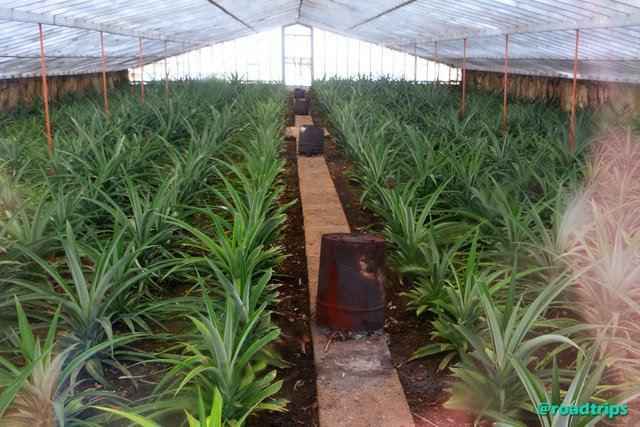
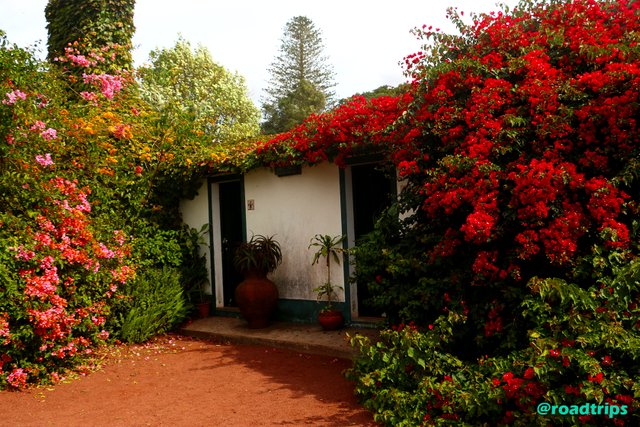

Glad you enjoyed it, have done that trip myself :)
Downvoting a post can decrease pending rewards and make it less visible. Common reasons:
Submit
Upvoted.
Downvoting a post can decrease pending rewards and make it less visible. Common reasons:
Submit
thanks! :)
Downvoting a post can decrease pending rewards and make it less visible. Common reasons:
Submit
Congratulations, Your Post Has Been Added To The Steemit Worldmap!
Author link: http://steemitworldmap.com?author=roadtrips
Post link: http://steemitworldmap.com?post=visit-the-azores-11-juicy-pineapple-from-europe-only-on-sao-miguel-en-ger-fr
Want to have your post on the map too?
Downvoting a post can decrease pending rewards and make it less visible. Common reasons:
Submit